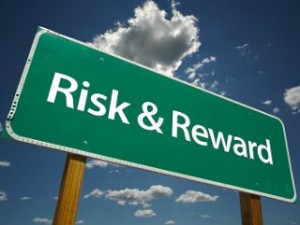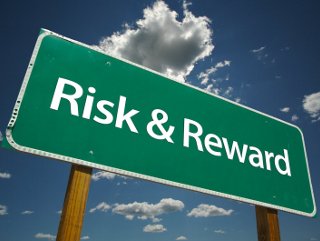 Risk and Reward/Predicting Cash-Flow: Investors think as much about risk as they do reward. Most people tie their investments to resources, expecting them to grow, and with it, their own rewards. Where rewards are expressed in percentage growth, risks are harder to characterize. Guessing a company’s future cash-flow involves looking at past revenue, you then make reasonable assumptions based on how the new product will fair or how their rivals will be purchased. A dollar today is worth more than a dollar in a year’s time so if I buy a one-year bill that promises 5% interest, you will have $1.05 next year. Whereas a dollar next year is just a dollar. If I want a dollar next year, I could buy 95.2% worth and have the 4.8% to spend. This works with the federal government but a company or angel investor can expect to demand a higher return to compensate for the risk of their capital. The next step is to determine what the return on investment would be for these investors. Opportunity costs; it’s better to invest in an apartment than a stock. Apartments are illiquid, and it is much easier to trade in and out of other investments. Savings have low returns because they are highly liquid. If you tied up your money for a long period, it would bring about higher returns. Imagine a house party where you are going to meet the person of your life. If you didn’t go to that house party, then you would have missed out and the risk is enormous. Risk is actually not just the possibility of a bad thing happening, but of something good not happening.
Risk and Reward/Predicting Cash-Flow: Investors think as much about risk as they do reward. Most people tie their investments to resources, expecting them to grow, and with it, their own rewards. Where rewards are expressed in percentage growth, risks are harder to characterize. Guessing a company’s future cash-flow involves looking at past revenue, you then make reasonable assumptions based on how the new product will fair or how their rivals will be purchased. A dollar today is worth more than a dollar in a year’s time so if I buy a one-year bill that promises 5% interest, you will have $1.05 next year. Whereas a dollar next year is just a dollar. If I want a dollar next year, I could buy 95.2% worth and have the 4.8% to spend. This works with the federal government but a company or angel investor can expect to demand a higher return to compensate for the risk of their capital. The next step is to determine what the return on investment would be for these investors. Opportunity costs; it’s better to invest in an apartment than a stock. Apartments are illiquid, and it is much easier to trade in and out of other investments. Savings have low returns because they are highly liquid. If you tied up your money for a long period, it would bring about higher returns. Imagine a house party where you are going to meet the person of your life. If you didn’t go to that house party, then you would have missed out and the risk is enormous. Risk is actually not just the possibility of a bad thing happening, but of something good not happening.

